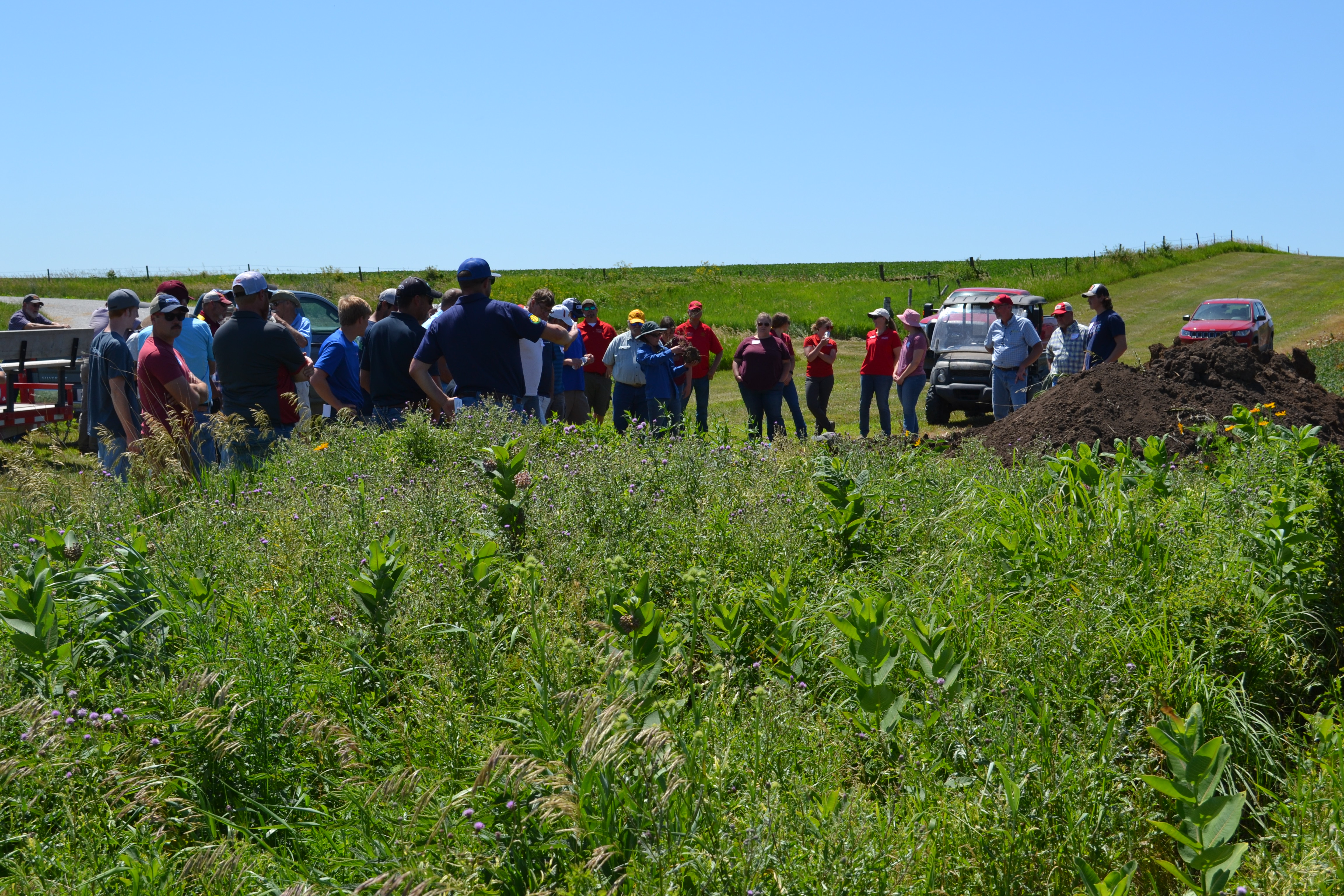
Science-based Trials of Row Crops with Prairie Strips (STRIPS) was one of the highlights during a recent field day held at the ISU Armstrong Research and Development Farm near Lewis. (Photo credit: Kriss Nelson/Iowa Soybean Association).
Building resilience in cropping systems
July 7, 2022 | Kriss Nelson
Grasses and flowers native to the state are popping up in Iowa corn and soybean fields—and it’s intentional.
A recent field day sponsored in part by the Iowa Soybean Association (ISA) showed how a team at Iowa State University is adding native grasses and flowers to traditional fields, which is reducing soil erosion, improving water quality, and providing wildlife habitat.
The event, hosted by Iowa State University Extension and Outreach, the Wallace Foundation and the United States Department of Agriculture’s Natural Resources Conservation Service, in collaboration with the Southwest Iowa Soil Health (SWISH) team, was held at the ISU Armstrong Research and Development Farm near Lewis.
In addition to the Science-based Trials of Row Crops with Prairie Strips (STRIPS), experts also explored corn rootworm management and how to maximize cover crop benefits.
“The Iowa State University STRIPS team has been conducting exciting research on how the strategic placement of prairie strips in a field can have many positive outcomes on a grower’s operation,” says Ben Porepp, ISA conservation agronomist.
The STRIPS program came to life in 2007 when a group of researchers at ISU integrated prairie vegetation back into fields traditional planted to corn and soybeans. Prairie vegetation was prominent before settlement in the state.
“Prairie was once the dominate ground cover,” says Tim Youngquist, agriculture specialist with the STRIPS program. “Now, we have corn and soybeans covering 70% of Iowa. We have two annual crops active for about five months of the year.”
Researchers planted strips of native grasses and flowers in various spots of the field, including the bottom of hills, alongside waterways and terrace channels.
“Prairie strips are a great option for protecting soil and water in susceptible parts of a farmer’s field,” says Porepp.
By converting 10% of a crop field into prairie, results showed a reduction of erosion leaving the field—by as much as 95%.
“You can keep that soil in the field,” Youngquist says. “Prairie plants have grown here for thousands of years. They are uniquely designed to handle the hot summers and cold winters. They have thick stems and deep roots. Not only does water infiltrate down into the strips, but these stiff stems also act as a stiff bristle comb and help water absorb as it moves through the field.”
In addition to soil and water health benefits along with installing planting strips, Youngquist says there has been a noticeable increase in the presence of bees, birds and other wildlife. There has been three times the number of pollinators and twice the number of birds with the addition of prairie strips back into the fields of row crops.
“To keep soil in place and healthy water in Iowa, it will take a lot of practices on many acres. Prairie strips are just another way and bring a habitat value,” says Youngquist, who also farms in Sac County.
He realizes the economics of farming but sees some “unintended consequences” that have come with planting acres solely in a corn-soy rotation.
On the Youngquist farm, they have placed prairie strips near a creek, on the steepest edges of the field, and also in the least productive parts.
“Having so much of our land area covered with these two crops that are only active a few months of the year has created an issue with our valuable topsoil,” he says. “This is some of the best soil in the world eroding off our fields into the waterways as well as the nutrients that come with it.”
For more information on the STRIPS program, contact Tim Youngquist at 712-269-0592 or timyoung@iastate.edu.
Back